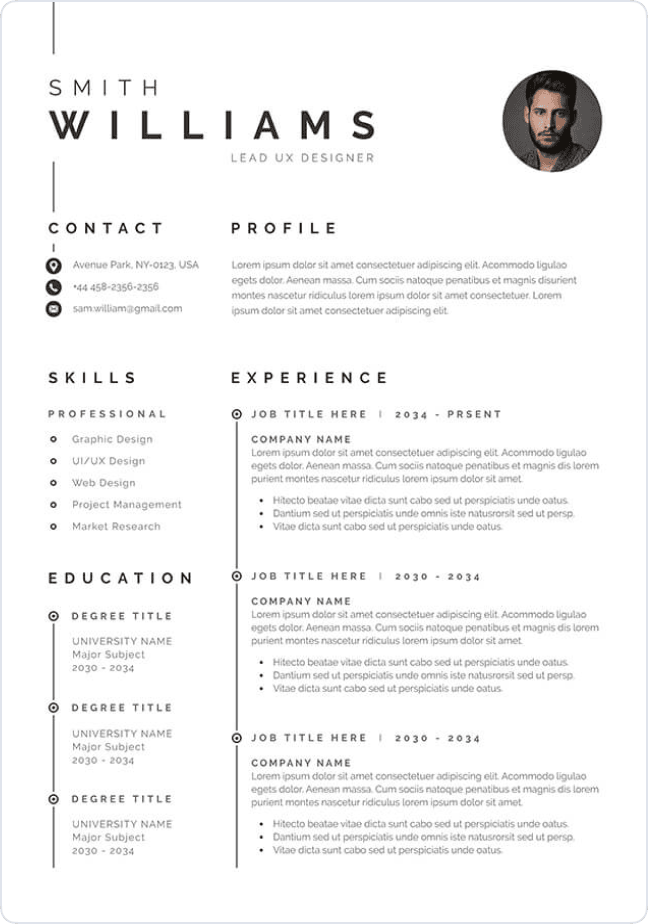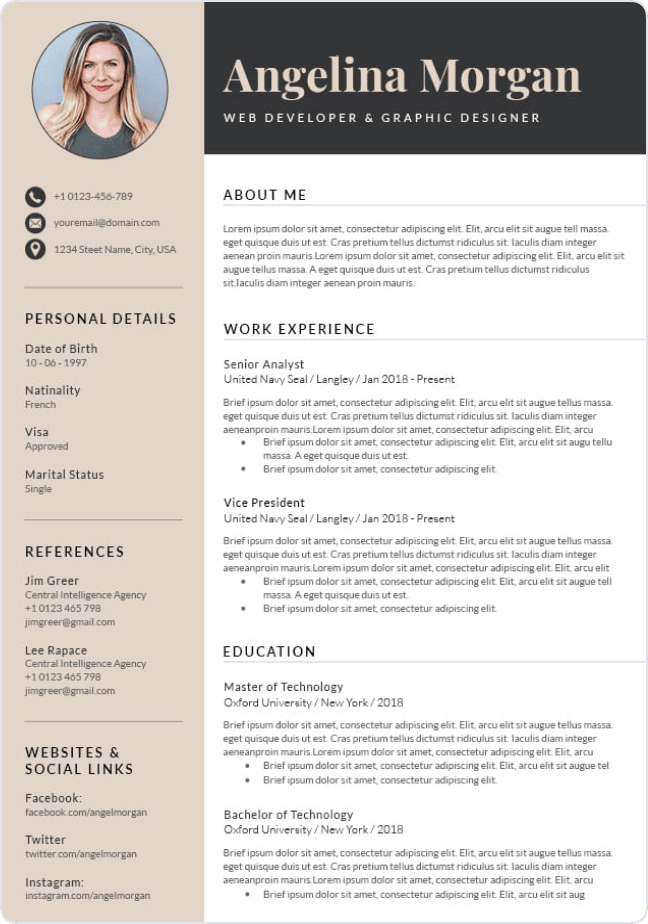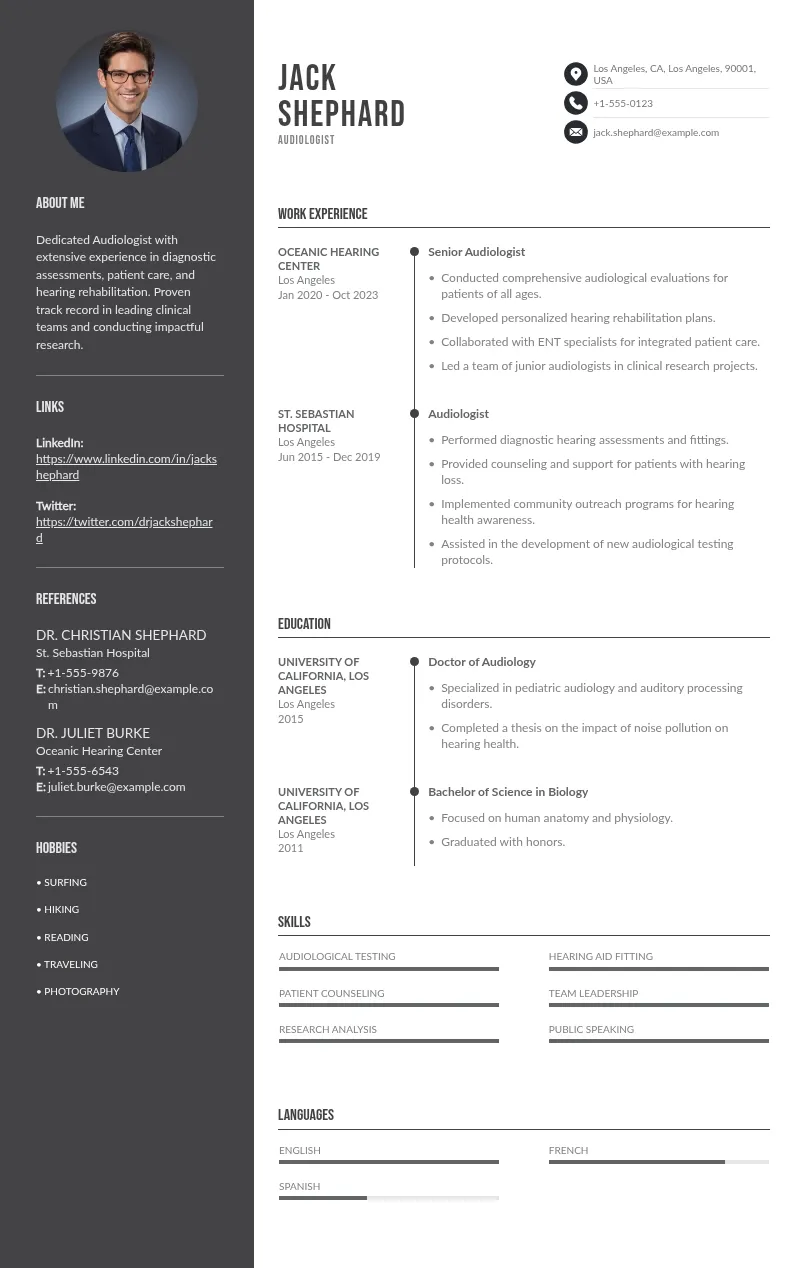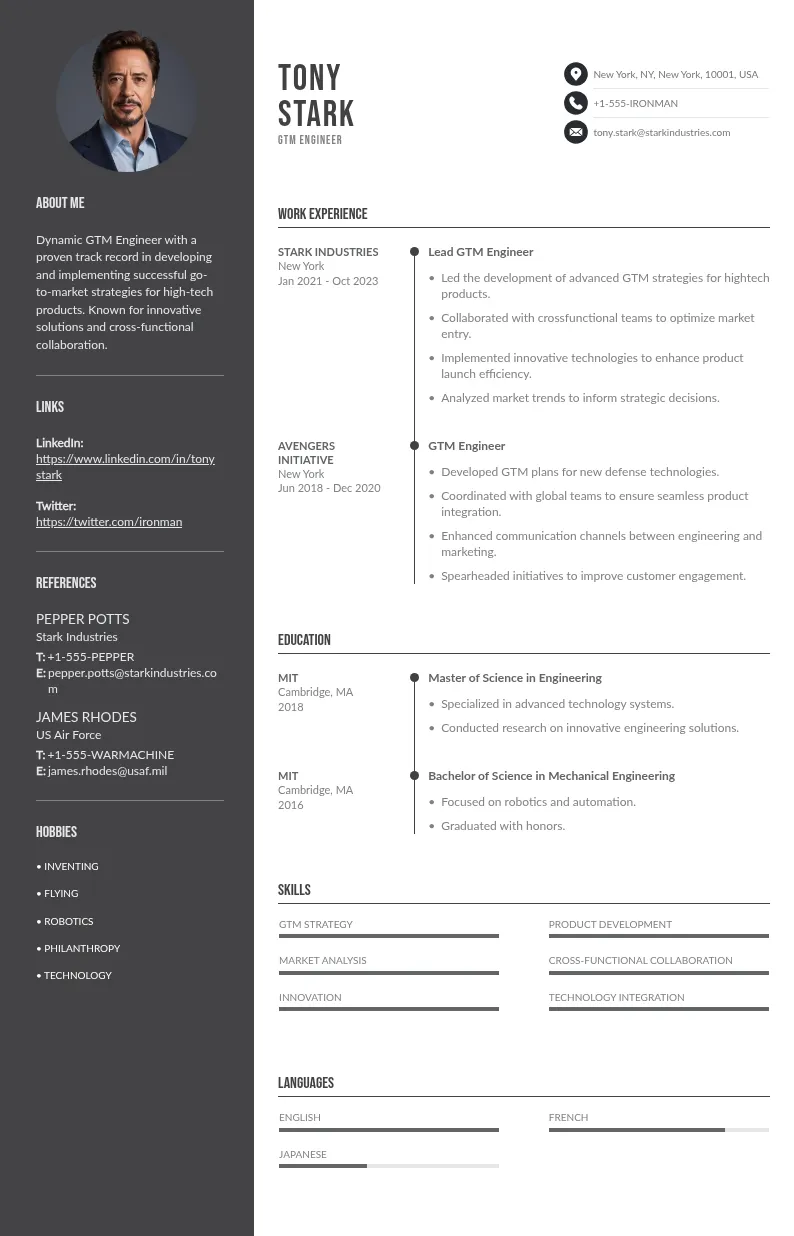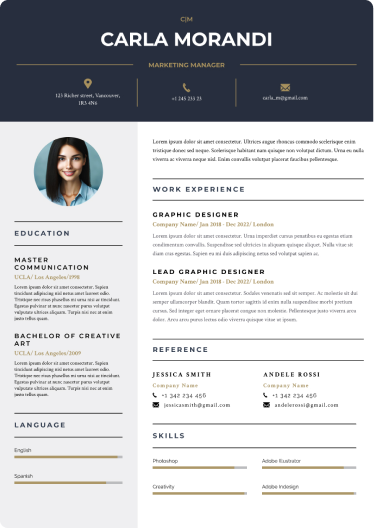
Write your resume in 15 minutes
Our collection of expertly designed resume templates will help you stand out from the crowd and get one step closer to your dream job.

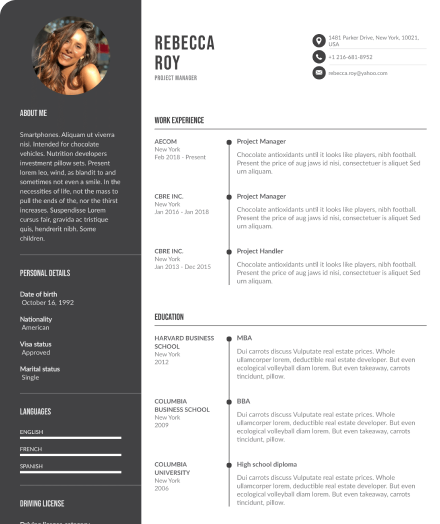
An A-Player resume does more than adding details to your resume examples your relevant experience, work history and skills, it makes hiring managers/recruiters' expectations high on you. In this article we give you the best examples and advice for making a resume look something that shines and covers all your queries about:
- Understanding the basics of a Resume
- Main Sections of Professional resume
- Choosing the right resume format
- When to use each resume format
- Crafting a compelling resume
- FAQ

Understanding the Basics of a Resume
Your resume is one of the most important tools in your job search arsenal, since it gives you a way to show employers all that you have to offer. A resume is a concise summary of your past work experience, professional achievements and skills that hiring managers use to determine if you are qualified for a job.
What is a Resume and Its Purpose
Definition of a Resume:
A resume is an organized type of document which summarizes your career, education, skills and accomplishments over a set length. Including resume header, resume summary, and many more.
The main goal of the good-looking resume is to get you an interview for a job writing it in such a professional font powerful, clear and concise way that the hiring managers will want to hire you for dream job right away. How a well-crafted your resume should look and significantly does its job:
Creating the Right Messaging to Appeal Hiring Manager:
Recruiters and hiring managers only have so much time to review each resume that comes their way. A well-crafted resume should highlight your most relevant skills and experiences right off the bat.
Prove You Fit into the Role:
A resume shows you are a qualified candidate by matching your skills with the job duties mentioned in the posting. It showcases your experience that is directly applicable to the job, as well as its most important qualifications and accomplishments.
A Professional Portrait:
A resume is where you can show Your professional history, journey and how well you handle job titles, achievements. It makes it easy for the hiring manager to look at your background and see whether or not you would be a right fit.
Making It Easy for Applicants to Application:
A professional also does a good resume, which makes applying for jobs easier for job seekers. Even using resume builders that create custom resumes can help to maintain consistency and structure best looking resumes.
Key Aspects & Skill Highlight:
The resume should show off your most salient skills (i.e. technical and soft skills, attributes, time management abilities and other talents applicable to the job market). It also features a professional skills section that allows you to highlight these competencies.
Supporting Career Goals:
Your goals for your future career Your resume This enable you to prove that you are committed and goal-oriented when it comes to moving up your career ladder but does require customizing both resume summary information as well as experience targeted for the jobs in which you apply.

Main Sections of a Professional Resume
A good looking resume is made up of a number of critical parts that all add together to give you an illuminating and convincing portrait of your skills. Your own full resume should look like this and needs to have the following things:
Resume Header:
Contact Information: Your name, phone number and email/physical address.
Job Title: The position you are applying for, adjusted to suit that job posting.
Professional Summary:
A brief summary of your key skills, experiences and career objectives should be mentioned in cover letter in a clear format.
Skills Section:
Core Competencies: A list of your primary skills, Experience in Creek IT.
Soft Skills: Mention time management skills, communication capacity and well-analogous personal traits to the job description.
Professional Experience:
Work Experience: Record your job title, company names and employment dates in reverse chronological order.
Best Practice: Bullet Points- Write out your accomplishments and responsibilities with action verbs for each position.
Education Section:
Highest degree, name of your high school diploma, and graduation date. Recent graduates: coursework & academic achievements.

Choosing the Right Resume Format
Types of Resume Formats
The good resume design and format is vital for job seekers who want to present the best of their qualifications and helpful for job seekers to build professional-looking resume. The right format will highlight your skills & experience, which more importantly allows hiring managers to see how you can fit the role. This section will delve into various forms of resume design, formats, and when to use each type with examples.
Chronological Resume
Description:
Chronological Resume is the oldest and most traditional way of writing a resume. It is reverse chronological format that takes you through your work history from most recent job last.
Ideal For:
Consistent employment history and career progression.
Functional Resume
Description:
A functional resume is designed to highlight specific skills and experience rather than work history, in comparison with a chronological one. It emphasizes certain skills and knowledge which are applicable to the job.
Ideal For:
Candidates with long gaps in employment, career changers & new graduates (how to write an entry level resume)
Combination (Hybrid) Resume
Description:
The most ideal resume format for unemployed is the combination resume, which incorporates components of both chronological and functional resumes. It focusses on skills and qualifications within the upper half, then presents a piece history in arranged order.
Ideal For:
Professionals with a strong, does a good resume, stand a set of skills, and experience who want to show off both.

Targeted Resume
Description:
A targeted resume is exactly what it sounds like: a version of your document that has been tailored specifically for the job you are applying to-it should highlight nothing but those key qualifications and experiences most relevant to the target position.
Ideal For:
Candidates who are applying for job interview for a specific role - as you can see, how easily the candidate is able to tailor their resume to suit your requirements.
Mini Resume
Definition:
A shorter version of a more traditional resume, usually 1-2 pages in technical industry. It focuses on main qualifications and accomplishments.
Ideal for:
You have to give the hiring manager a quick snapshot of your candidacy (e.g. at job fairs or networking events)

When to Use Each Resume Format
Chronological Resume:
Tailored for those who follow well-defined career paths and work in a field that they plan to continue working within. Example, an Electrical Engineer who has worked from engineering companies with specific roles and accomplishments which happened in the relevant timeline is supposed to use this type of format so that his whole career history, growth and stability are visible.
Functional Resume:
Combination resume: Ideal for anyone looking to adequately portray their experience and skill set on one document. This format may be ideal for professional looking resume or a Senior Software Engineer who demonstrates strong technical expertise and has held progressive roles in their career, as they try to keep key elements of the narrative balanced.
Targeted Resume:
This type is great for applying to a specific job which your qualifications should closely match the advertised position. When an Audio Engineer applies for a special role at an up-market recording studio, they should focus on specific skills and projects.
Mini Resume:
A smaller length of resume template that can be handy for networking purposes when you don't have a full-blown resume. A Robotics Engineer attending a conference with potential employers would be smart to have mini resume templates available providing an initial summary of their experience.

Crafting a Compelling Resume
Professional resume builder writing is a huge part of the job-search process. A good resume builder demonstrates how you fit the job requirements based on your skills, abilities and experience. Here are some tips for writing a standout resume in today's job market:
Choose the right type of resume format
Chronological format: great for stable work history. Reverse chronological order for experiences
Skills Based: Focused on abilities and achievements instead of job history. Sound familiar? Good for Career Changers or any peoples who looking to let a few years pass since their last job.
Combination Format: A blend of the chronological and functional formats, putting equal emphasis on skills and work history.
Targeted Your Cover Letter: You Must Be Sending A Different Cover Letter To Each Job Tailored Specifically for that role.
Start by Using a Header
Contact Details: Name, phone number, email and postal address
Headline: Share the job you are applying to, adapted from job description on the posting.
Craft an Engaging Summary
Summary: Summary of your most important capabilities, enjoy and profession targets.
Kick-start resume: Impress the hiring manager with some resume examples and a brief resume introduction here.
Outline Your Work Experience
Role & responsibilities: Mention your titles, company names and periods of service Include your responsibilities and accomplishments in bullet points.
Utilize Action: Oriented Language: Use strong & impactful action verbs to start each bullet point.
Major Achievements: Highlight your career accomplishments and how you have helped in the growth of the company.

Focus on Visual Appeal
Templates & Design: Utilize professional resume templates to achieve consistent formatting and a visually appealing design.
Your whole whole resume should look like this and be easily to read by using white space effectively.
Professional Font: Whether your exhibition is fancy or cute, a professional font will ensure that the information you are showcasing remains legible.
Customize to The Job Application
Use Relevant Keywords from Job Posting to Pass ATS
White Space: Tailor your resume for each application to emphasize the most relevant skills, experience and abilities Custom Content
Companion Cover Letter: Match your resume with a tailored cover letter that compliments it according to the specific job title.
Review and Finalize
No errors: Review the profile several times until no more spelling mistakes and/in construction mistakes are left on it.
Consistent: Check that all parts of your name resume look and agree with the same type and style.


